Over the years of the Nadaswaram becoming integral to the concept of weddings and all occasions auspicious, what has been its relationship with this space?
Nadaswaram performances have increased over the years because of the instrument and its sound being an integral part of the temple tradition, and auspicious occasions like weddings.
In the earlier days, kings used to provide patronage to Nadaswaram artistes, because of the significance given to the instrument.
Of course, the Nadaswaram must be played differently for different occasions. For example, there is a specific format to be followed when we play the instrument in temples. This format, however, differs from deity to deity, and temple to temple. What we play in a Shiva temple, for instance, is different from what we play in a Vishnu temple.
Because of its innate auspicious nature, has the Nadaswaram in a way become limited to the idea of festivities? Would you see this as an advantage or a disadvantage?
No, not at all. In fact, it is a privilege that the instrument is played at festive, auspicious occasions. Besides, the opportunity for performance at temples, weddings and festivities is ample, so there is no question of it being a disadvantage.
Whatever we do, must be done with dedication. We must show the same dedication in teaching, as in performance. Students should also respond to the teacher’s approach. It is only when this alignment happens that they can shine brightly
In the world of today, what is the place and position of this instrument and those who play it? Could you reflect a little upon its future?
The future of the Nadaswaram and its artistes is very bright. All that is required is single-pointed dedication from the artistes.
In the current context, experimentation is a common jargon; what is your take on this? Does the Nadaswaram have many possibilities or would you like to think of yourself as a purist?
I am a thorough purist. We may collaborate with other instrumentalists, but the way we approach and present the instrument must be within the framework of classicism. We cannot change the way the instrument is played. Whatever our ancestors and teachers have taught us must be kept in mind, and we should pursue the path without any wavering. There can be no compromise on that front.
How has the instrument itself evolved over the years?
In the good old days, Nadaswarams used to be shorter and used to be played at higher pitches ranging from 4 to 5.5. These were known as Thimiri Nadaswarams. The great maestro T N Rajarathinam Pillai worked with skilled Nadaswaram craftsmen, elongated the instrument and made the Baari Nadaswaram which was played at lower pitches ranging from 2 to 3.5. We now have Nadaswarams at pitches like 1 and 1.5 as well. We also have the joint Nadaswaram where the length of the pipe is split into different sections that can be joined together. But it hasn't become popular.
Do you ever find yourself comparing the Nadaswaram with other instruments?
Every instrument has its own speciality. Some Sangatis or Pidis (musical phrases) are most suited to the Nadaswaram. There are some other phrases that are suited to other instruments like the veena or the violin. We should practice whatever we want to play very well on our instrument and then play it in performances.
What about audiences? You said in another interview, that at a wedding concert, even though it may seem like people are not listening, they actually are. But is that listening merely enough?
The audience differs depending on the venue and occasion. For example, the audience in a sabha concert is different from that at a wedding. In a sabha concert, everyone is usually silent and focussed on the music that is being performed. People have come there to listen to the performance.
In a wedding, they have come primarily to attend the wedding and to meet their friends and relatives. When we perform at weddings, the people who can understand the music definitely appreciate the performance. Wherever we play, we have to give it our all. We should not relax or compromise our playing because it is only a wedding concert, or because the audience turnout is less.
How should audiences engage with this instrument and what are practitioners like you doing towards that?
The ultimate goal is to never lose sight of classicism. However, we must play in such a way that the audience is attracted to our performance. For instance, even if they are watching the marriage proceedings, they should turn and listen to us because they are attracted by the music. This is solely in the hands of the artiste.
Does listening to the Nadaswaram require an art of cultivating a certain skill?
The depth with which people listen to and understand music, varies. Those who may not have had much exposure to music also appreciate good music. Those who know music well, listen to it with a greater level of depth. The involvement people develop with music increases by listening. The more they listen, the more they understand and appreciate.
With age comes experience and maturity. We learn how to present better. It is only if someone has a health problem that they face difficulties in performing. Otherwise, we only get better with age
Do you think its non-commercial approach and nature have also impacted the financial growth for the community of Nadaswaram artistes?
Most Nadaswaram and Thavil artistes are associated with temples located in the area they live in. They get to perform in these temples periodically, some even daily, and thus also get a lot of opportunities to practice the instrument. Playing in a temple is divine and has its own greatness. They get to perform their instrument as an offering to God.
The remuneration they earn is certainly not in proportion with their expenses. But that doesn't mean they dilute the art.
We must focus only on the art. If we focus on the commercial aspects, we will lose out on the art. Money is indeed needed. But we have to preserve what our elders have given us. We need to thus have a non-commercial approach to art. If we take care of the art, the art will take care of us.
What is the community of Nadaswaram artistes like, presently? Does it comprise of only people who belong to lineages, or is it open to newcomers?
Many practitioners of this art come from lineages. Sometimes there are 10 to 15 generations of a family that have been practicing this art. Belonging to a lineage of Nadaswaram artistes also makes it easier for newer practitioners to learn and play the instrument.
However, there are many youngsters, outside of Nadaswaram families, who come to learn the art form. Anyone can learn to play the Nadaswaram. My wish is that everyone should learn and play it. Music is for everyone and within everyone.

Do young people choose to learn and pursue a career in it? What is their motivation for doing so?
It is definitely not easy for youngsters. In the past, our expenses were limited. Now they are not. You need enough money to even buy yourself a single meal.
We always tell our students to learn the art well before they begin to perform. But in the current context, students who are learning have a chance to make some money by performing. This is especially helpful for students coming from other cities and villages to bear their accommodation and food expenses. Performing in a temple or at a small function gives them some income to take care of those things. The Nadaswaram is definitely financially difficult for practitioners.
Apart from being a well-known performer, you are also a well-respected teacher of the art. How do you manage to do both so well?
Whatever we do, must be done with dedication. We must show the same dedication in teaching, as in performance. Students should also respond to the teacher’s approach. It is only when this alignment happens that they can shine brightly.
We must sincerely teach whatever we know. Students must receive whatever we teach. How much they receive determines how much they can shine.
Do students of today have the capacity to take the art form forward?
I definitely believe youngsters today have the capacity. The desire is definitely there. But appropriate effort has to be put in and I think they will definitely get there.
The Nadaswaram is not an easy instrument to master, right? Talk to us a little about how one gets proficient with it?
Only by practice, practice and practice… And dedication.
As an instrument that requires in addition to skill, a great amount of strength too, do you think age forces you to slow down? How do you preserve that strength? What is that routine?
With age comes experience and maturity. We learn how to present better. It is only if someone has a health problem that they face difficulties in performing. Otherwise, we only get better with age.
Playing the Nadaswaram itself is like an exercise that can keep your body healthy. As we keep playing, we understand which portions are being played with greater difficulty and figure out how to play them with greater ease. We also get better at handling the Seevali (the reed mouthpiece that is used to play the Nadaswaram). We definitely get better with experience.
If there’s any phase in your life that you’d like to return to, which would it be, and why?
Today is God's gift and I am happy where I am today.
Do you have a dream career project or have you achieved all that you wanted?
My dream is that a lot of young people should take up and play the instrument. Each one of them should have a distinct style of their own. By just listening to one's performance we should be able to say who is playing. People should develop the art like that and I am sure people will do so. If something like that happens, it will be very good for the art.
Interviewed by Ramkumar R
2 comments Comments





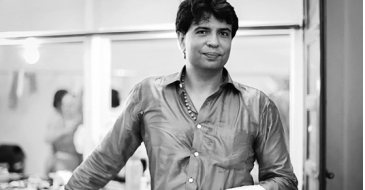

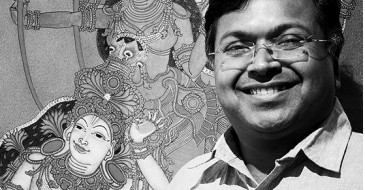
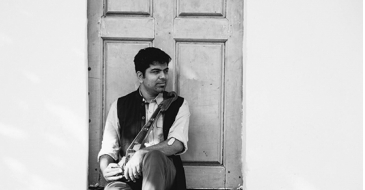
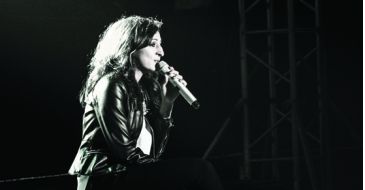
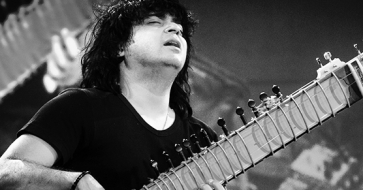
G Srikanth
September 10, 2017
Sivaramakrishnan
September 09, 2017